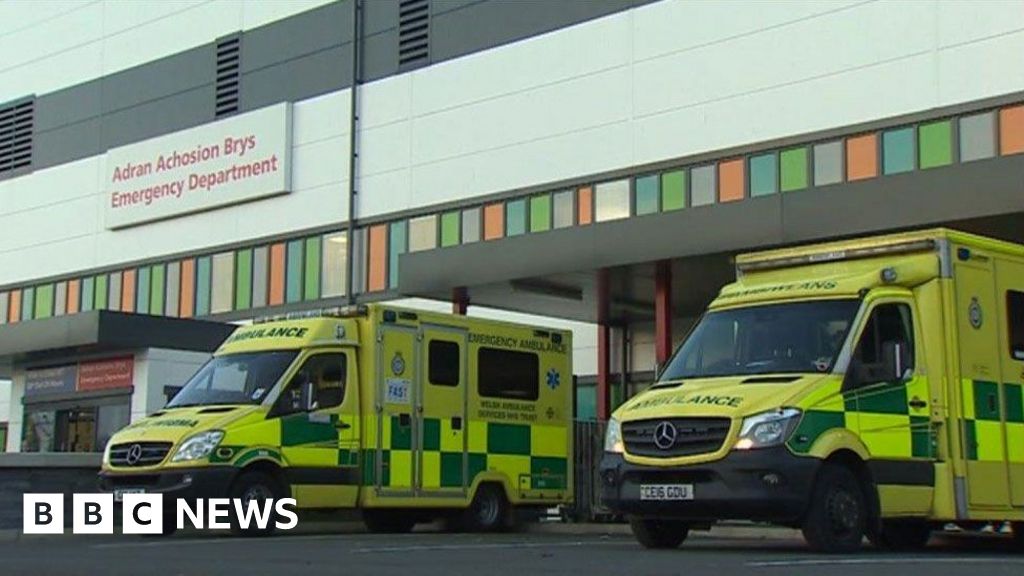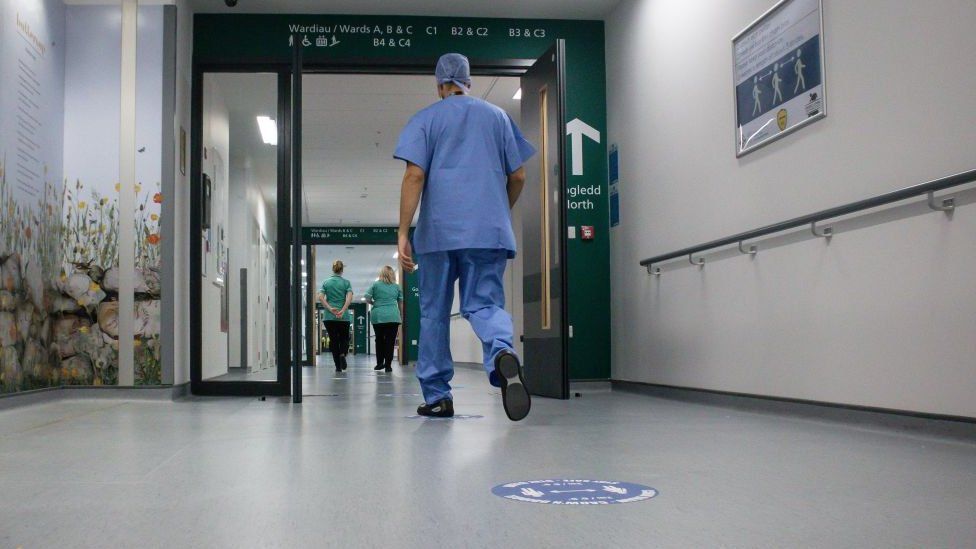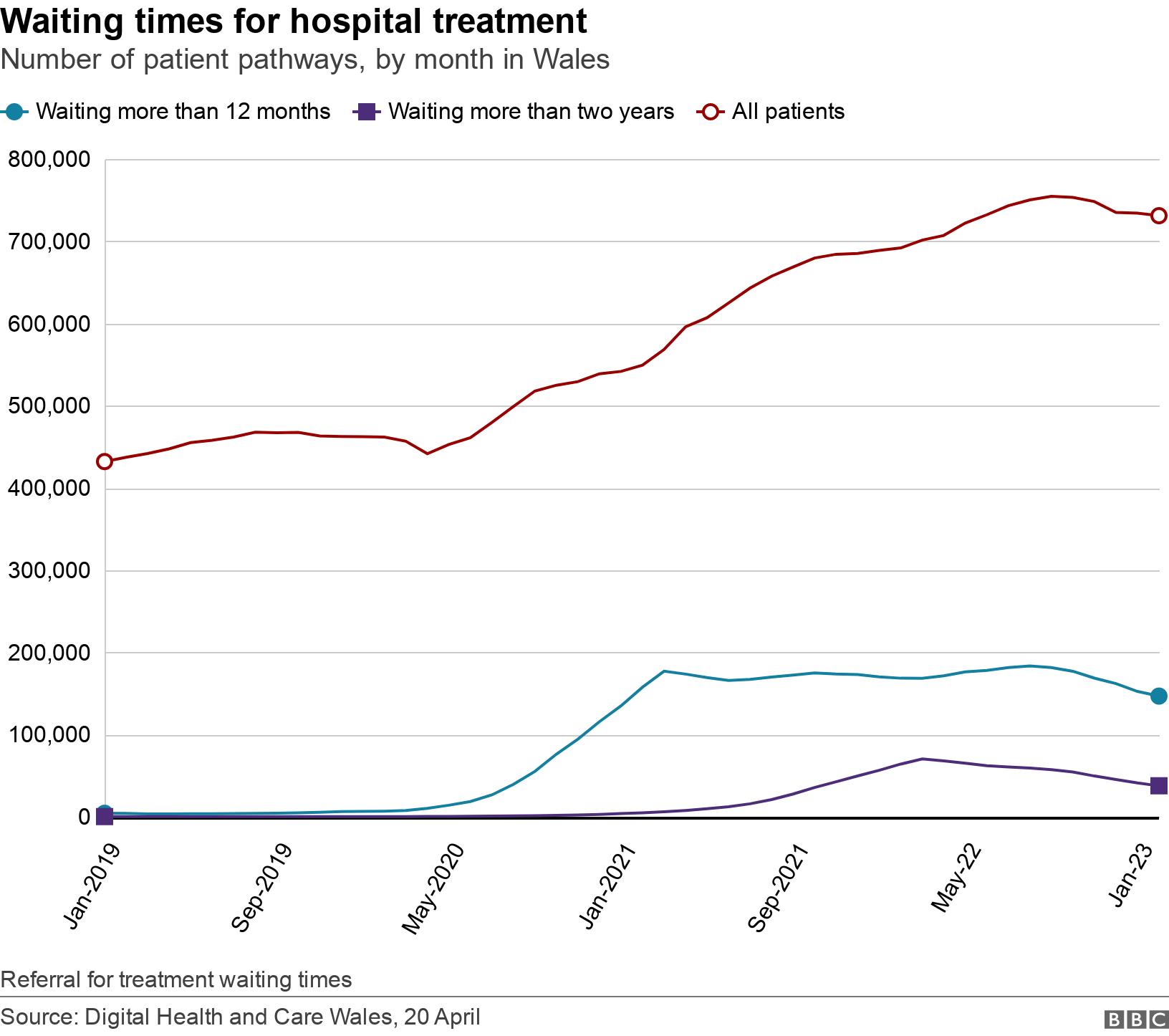文章管理 查看文章



Waiting times for hospital treatment are continuing to improve in Wales.
There was also an improvement in performance on the main cancer target, which had been the worst on record.
But ambulance response times were the second worst on record and there was a worsening in waiting times in emergency departments.
The health minister said she was pleased that "some headway" had been made into hospital treatment waiting times.
Eluned Morgan said she expected to see positive trends continue on the longest waits, but Conservative opponents said the numbers waiting more than two years - still more than 37,500 - was "inhuman".
On ambulance targets, Ms Morgan added: "Response times for the most urgent calls continue to be a major challenge and we expect to see improvements in ambulance patient handover in the coming months to enable better performance."

The number of people waiting for hospital treatment, after referral, fell for a fifth month in a row.
There were still 731,012 "patient pathways" on the list - this is about 573,900 actual patients, when those who are on more than one waiting list are counted.
Those waiting more than a year or two years for treatment also continued to fall.
Those waiting more than a year fell by nearly 5,700 to 146,776 - the lowest number for two years.
There are still 37,594 patients waiting more than two years.
There are also still higher proportions of long waits compared to England, where just over 5% of patients are waiting more than a year, compared to 20.1% in Wales.
There are also hardly any patients waiting two years in England, while people waiting that long still make up 5.1% of the waiting list in Wales.

The key post-pandemic NHS Wales recovery target - that no-one should wait more than a year for an outpatient appointment - continues to be missed, although in-roads have been made on the list for a sixth month in a row.
There were still 63,027 patients waiting more than a year, a monthly drop of 4,588.

Ambulance response times were the second worst on record with only 47.5% of immediately life-threatening "red" calls attended to within eight minutes in March, and a failure to meet the 65% target for the 32nd month in a row.
The average response time to "red" calls was eight minutes 24 seconds - 30 seconds slower than the previous month and 34 seconds slower than the same month in 2022.
There was a slight rise to in handover delays. There were 12,190 "lost" hours by ambulances spending time outside major A&E units, unable to drop off patients beyond the 15 minute target.
Numbers stuck in hospital despite being well enough to be discharged had dropped below 1,000, with around 865 patients waiting for a care package or support to be arranged.

A&E waiting times have worsened slightly over the month.
Against the four-hour target, 69.5% of people were admitted, transferred or discharged within that time frame.
Meanwhile, 10,045 people spent 12 hours or more in A&E before being seen - no-one should wait that long under current targets. This is a first monthly increase after improvements following record numbers waiting that long in December.
The median waiting time was two hours and 41 minutes - four minutes slower than the previous month.
When we look at major emergency units only, Wales has performed better than A&E units in England for seven months in succession, with 59.9% of patients seen within four hours, compared to 56.8% in England.
Cancer performance figures improved after the previous month had been the worst month since the new target was introduced.
Only 52.5% of people started their first treatment in February within 62 days of cancer being first suspected.
That was as low as 41.1% in Cwm Taf Morgannwg health board.
What has been the response?
Conservative health spokesman Russell George said there had been little progress and the people of Wales deserved better "than a 50-50 chance of an ambulance arriving on time".
He added: "Despite the fact that inhuman two year waits for treatment waits have been virtually eliminated elsewhere in Britain, there are tens of thousands of people waiting far too long in Wales.
"In fact, based on latest data, Wales still has more people waiting over two years for treatment than the entirety of England have waiting for 18 months."
Enter a postcode to find out what is happening in your area with A&E, ambulances and hospital waiting lists across the UK.

How are your local NHS services coping this winter?
Enter a postcode to find out. Eg ‘B1 1RF’
Last updated: Thursday 13 April
About the data
Data for England is shown by NHS trust, where the trust includes at least one hospital with a Type 1 A&E department. Type 1 means a consultant-led 24 hour A&E service with full resuscitation facilities. Data for Wales and Scotland is shown by Health Board and in Northern Ireland by Health and Social Care Trust.
When you enter a postcode for a location in England you will be shown a list of NHS trusts in your area. They will not necessarily be in order of your closest hospital as some trusts have more than one hospital. Data for Wales and Scotland are shown by NHS board and by Health and Social Care trust in Northern Ireland.
Comparative data is shown for a previous year where available. However, where trusts have merged there is no like-for-like comparison to show. Earlier data is not available for all measures, so comparisons between years are not always possible.
A&E attendances include all emergency departments in that trust or health board, not just major A&E departments, for example, those who attend minor injury units.
Each nation has different target times for some of the measures shown, therefore comparisons between them may not be possible.
A modern browser with JavaScript and a stable internet connection are required to view this interactive.
If you can't see the lookup, click here
Related Topics